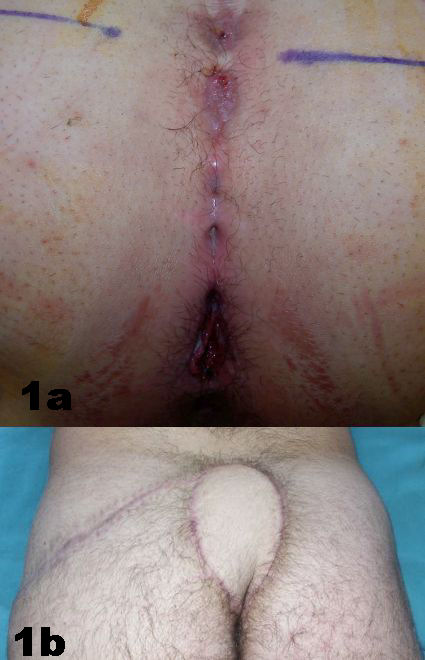McCormick Place, Lakeside Center
Sunday, September 25, 2005
9:00 AM - 5:00 PM
McCormick Place, Lakeside Center
Monday, September 26, 2005
9:00 AM - 5:00 PM
McCormick Place, Lakeside Center
Tuesday, September 27, 2005
9:00 AM - 5:00 PM
McCormick Place, Lakeside Center
Wednesday, September 28, 2005
9:00 AM - 5:00 PM
8464
Superior Gluteal Artery Perforator Flap: An Alternative in the Tratment of Complicated Pilonidal Sinus
Background Although the majority of the sacrococcygeal pilonidal sinuses can be treated with simple surgical procedures, there are some annoying persistent cases that require some type of flap surgeries. However not all flaps are suitable for every cases; especially in young patients subsequent scar formation, and muscle function in an ambulatory patient should be considered.
Case Report An 18-year-old male presented with a chronic pilonidal sinus disease, which was resistant to different treatment modalities applied during the last four years. In physical examination, there were multiple sinus openings starting from the upper part of the intergluteal sulcus up to just 3 cm above the anus (Fig. 1a). Estimating a deep, wide intergluteal defect after the excision of the all-entire sinuses, a superior gluteal artery pedicled perforator flap from the left hip was carried out, under spinal anesthesia. In order to obtain a flap with a wide arc of moment on the perforator, the most lateral perforator was targeted. Suction drains were applied under the flap and the donor area. Donor site and the flap were sutured primarily in two layers. No complication was observed in the postoperative period. Mobilization was permitted gradually at 2nd day postoperative. The patient is healthy and no recurrence was observed during the 12-month follow-up period (Fig. 1b).
Discussion The ideal operation for pilonidal sinus treatment should be simple, require short hospitalization and have a low recurrence rate. There are several techniques suggested for the treatment of pilonidal disease. While the majority of the patients will heal with simple procedures, there are some challenging cases with extended margins that necessitate large flaps for reconstructions. However, it might not be reasonable to use conventional flap surgery in young patients. With perforator skin flaps; preservation of the muscle innervation, vascularization as well as the completeness of the underlying structures with the less postoperative pain and functional restoration are the major advantages. Superior gluteal artery perforator flap (SGAP) is used in the autologous breast reconstruction as a free flap, and as a pedicled flap in dorsal lower trunk defects and large sacral and gluteal pressure sores. The superiority of the pedicled SGAP flap to the classical gluteus maximus musculocutaneous advancement flap is the mobility and the three-dimensional harmony even in the midline of the sacral defects as well as muscle integrity and the intact muscle function. The created defect is filled with bulky, well-vascularized similar tissue. This flap also flattens the cleft in a perfect manner without sheltered any scar or stitch holes in the midline of the cleft. The main disadvantages of this procedure are the extended surgical time, prolonged hospitalization, steep learning curve, need for suitable microsurgical instruments and loop magnification, and the necessity for close postoperative care of the flap.
Conclusion The superior gluteal artery perforator flap is not first choice for sacrococcygeal pilonidal sinuses, however, it provides a reliable pathophysiological solution for the surgical reconstructions of the recurrent, obstinate, wide and especially long pilonidal sinus cases.
View Synopsis (.doc format, 460.0 kb)

